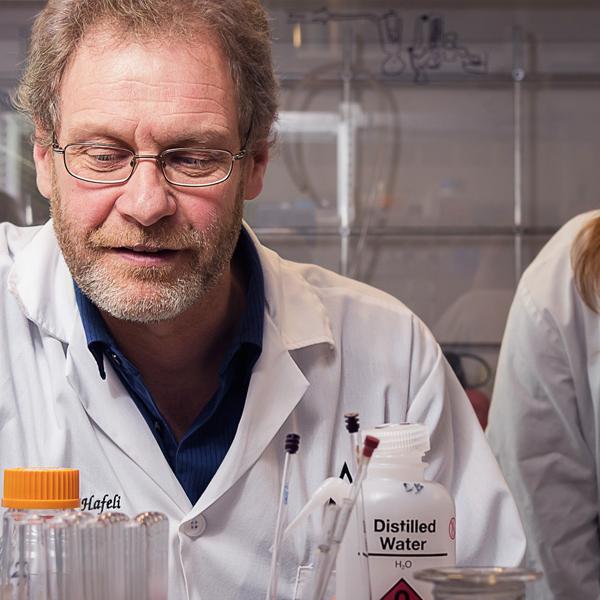Dr. Urs Hafeli
Professor
Dr. Urs Hafeli completed a bachelor of science in pharmacy at the Federal Institute of Technology (Zurich, Switzerland) and a doctor of philosophy in pharmacy at Paul Scherrer Institute/Federal Institute of Technology in Zurich. Dr. Hafeli is an associate professor in the Faculty of Pharmaceutical Sciences at UBC.
Current Research Focus
Research in the Hafeli Laboratory is primarily directed at fighting cancer with radioactive pharmaceuticals and the development of diagnostic radiopharmaceuticals to be used in different nuclear medicine procedures. He also enjoys exploiting nanotechnology and microtechnology for different drug delivery applications, including the development of painless microneedles and the use of microfluidics for the preparation of monosized microspheres. Under the guidance of Research Associate Dr. Kathy Saatchi, the Hafeli laboratory has a strong chemistry base that encompasses organic, coordination and polymer chemistry. Using these tools, Dr. Hafeli’s research includes the entire spectrum of drug research from the synthesis and radiolabelling of new molecules; the preparation of drug delivery carriers such as nanoparticles, microspheres, antibodies, and polymers; the careful evaluation of drug delivery systems in vitro and in toxicology experiments; and finally, efficacy testing in different in vivo models using many different imaging modalities (SPECT, PET, CT, MRI, optical imaging).
Example Project
Cancer immunotherapy requires new immunodiagnostic agents: Immune checkpoint inhibitors such as PD-1 and PD-L1 inhibitors are emerging as a front-line treatment for several types of cancer. However, only about a third of the patients react, and better diagnostic methods are needed to select the appropriate patients, thus saving money and preventing toxic side effects. We are working on mixtures of immunodiagnostic agents that will give us a ratio, or an immunoscore, between the different signals, and at the same time local information about the cancer, which is therapeutically highly meaningful. Novel radiopharmaceuticals allow for better diagnostics and therapeutics (if both: theranostics): First detecting cancer with gamma-emitters or PET isotopes, and then attacking it with radioactive beta- and alphaemitters is an old method. However, the targeting molecules have become more effective, while new radioisotopes have become available for imaging and treatment. We use both, and we also synthesize the connecting molecules, chelators, so that the radioisotope can safely reach the target tissue or organ, without falling off which could lead to toxic effects.
Research Keywords
Nuclear Medicine, Radiopharmaceuticals, Magnetic Microspheres, Drug Delivery, Nanomedicine, Quantitative Preclinical Imaging
